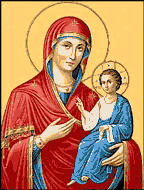Source: www.grahamphillips.net
Just as mysteriously as the abrupt epidemic of global aggression during the early fifteenth century BC, and at the same time, civilizations around the world suddenly adopted new gods. For example, in ...
The Celestial Disk
Just as mysteriously as the abrupt epidemic of global aggression during the early fifteenth century BC, and at the same time, civilizations around the world suddenly adopted new gods.
For example, in Turkey the Hittite civilization adopted a new god called Kumarbis; in Assyria, what is now northern Iraq, a god called Antum is first recorded; and in Syria the Mitannians suddenly embraced a new supreme deity called Ir.
Even across the ocean in Central America, later Mayan mythology speaks of a new god that brought warfare to earth at that time. In Iran another new religion was founded.
This was what became know as Zoroastrianism, and its oldest works, the Gathas, composed at exactly this time, taught the existence of a single, supreme deity called Ahura Mazda – 'The Wise Lord'. At precisely the same time a sect emerged in Egypt that revered a god called the Aten - 'The Disk'. This new religion grew over the following century and in the mid 1300s BC became for a while the national religion of Egypt, proclaiming the Aten as the only god.
Some of the earliest Chinese texts, found during excavations of the ancient city of Luoyang in eastern China, also make reference to a contemporary new sect. Dating from around 1480 BC, they refer to a cult that revered a single deity named Lao-Tien-Yeh - 'The Great God'.http://www.grahamphillips.net/eden/eden_3.htm#Fortunately
Just as mysteriously as the abrupt epidemic of global aggression during the early fifteenth century BC, and at the same time, civilizations around the world suddenly adopted new gods.
For example, in Turkey the Hittite civilization adopted a new god called Kumarbis; in Assyria, what is now northern Iraq, a god called Antum is first recorded; and in Syria the Mitannians suddenly embraced a new supreme deity called Ir.
Even across the ocean in Central America, later Mayan mythology speaks of a new god that brought warfare to earth at that time. In Iran another new religion was founded.
This was what became know as Zoroastrianism, and its oldest works, the Gathas, composed at exactly this time, taught the existence of a single, supreme deity called Ahura Mazda – 'The Wise Lord'. At precisely the same time a sect emerged in Egypt that revered a god called the Aten - 'The Disk'. This new religion grew over the following century and in the mid 1300s BC became for a while the national religion of Egypt, proclaiming the Aten as the only god.
Some of the earliest Chinese texts, found during excavations of the ancient city of Luoyang in eastern China, also make reference to a contemporary new sect. Dating from around 1480 BC, they refer to a cult that revered a single deity named Lao-Tien-Yeh - 'The Great God'.http://www.grahamphillips.














